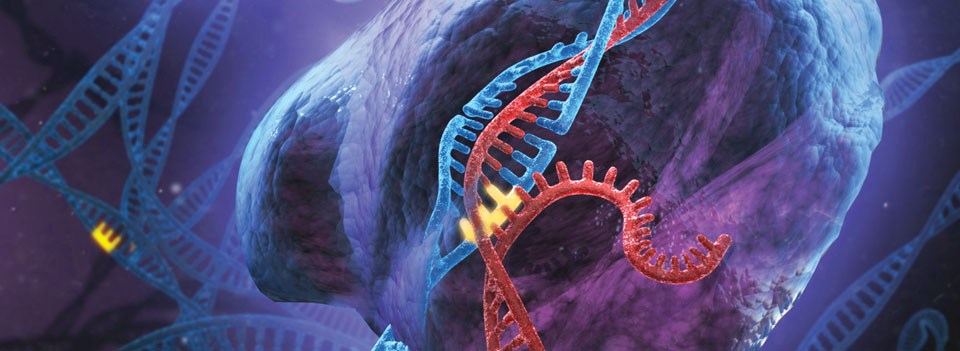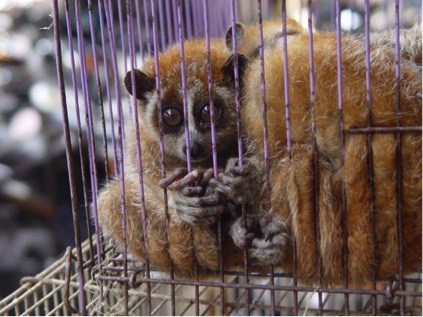|
By Erik Schiferle
Fracking, or hydraulic fracturing, is a natural gas collection process. The process requires the drilling of a well, which first descends vertically into shale rock layers between 6,000 and 10,000 feet underground and then continues horizontally for approximately one mile. Typically, a dilute acid mixed with thousands of gallons of water is pumped under high pressure into the well to create and open fissures in the shale rock surrounding the well. Then, a “slickwater mixture,” consisting of water, sand, and certain chemicals, is pumped into the well to further open and prop fractures. Fresh water is later pumped under high pressure to flush out the mixture. Natural gas escapes through the fissions and is collected at the surface. Each fracking rig and the chemicals used in the extraction process vary depending on the environmental conditions. But one fracking company website, to remain unnamed, lists some of the chemicals used in the fracturing process. The site lists household products in which some of the chemicals are found. However, the company does not list all of the chemicals and it makes no attempt to explain how the chemicals affect the environment or how they can be dangerous to humans. Tests done on fracking water have found chemicals such as hydrochloric acid, ethylene glycol, methanol, mapthalene, diesel fuel, benzene, ethylbenzene, and xylene, to name a few. Hydrochloric acid upon mixture with oxidizing agents can produce deadly chlorine gas. Ethylene glycol, commonly used for aircraft anti-freeze, upon ingestion can induce symptoms such as vomiting, drowsiness, coma, respiratory failure, convulsions, and renal damage. Methanol, if ingested, can break down into formic acid, which can cause permanent blindness by destruction of the optic nerve. Naphthalene, diesel fuel, and benzene are all classified carcinogens by the Environmental Protection Agency (EPA). Furthermore, ethylbenzene, and xylene are classified as suspected carcinogens by the EPA. Because hydraulic fracturing occurs primarily well below the surface of the earth, fracking companies claim that there is little to no environmental hazard. However, studies done in Pennsylvania have found all of the chemicals listed above at highly toxic levels in drinking water. Steve Lipsky of Texas claims that he is able to light his drinking water on fire because of fracking. He is not alone. The fracking company in question claimed that there is no proof that the drinking water was contaminated by the fracturing process directly. It also claims that residents in other areas, which do not have fracking rigs nearby, but have underground water aquifers near natural gas reserves, have also seen this phenomenon. For 4.2 million dollars, the fracking company is suing Steve for defamation. Experts argue that natural gas is a cleaner alternative to other hydrocarbon energy sources, such as coal, and that there is enough natural gas in the United States to power the entire country for the next 50 years. From a short-term economic standpoint, fracking could stimulate job growth and lower natural gas prices. However, without a better understanding of how fracking directly affects the environment, the benefits may not outweigh the costs of fracking. In defense of the fracking companies, some of the chemicals found at toxic levels in drinking water have yet to be directly linked to hydraulic fracturing: correlation does not necessarily mean causation. But, before companies continue to frack or at least before there is an increase in hydraulic fracturing, it may be worthwhile to determine if hydraulic fracturing is the cause of the contamination and how else it might affect the environment.
0 Comments
By Ian MacArthur
The problem of infectious disease has essentially been solved in First World countries. While the citizens of developed nations may suffer outbreaks of influenza from year to year, epidemics of measles, polio, tuberculosis, and other infectious diseases no longer pose a major threat to these populations thanks to the development of vaccines and antibiotics. In the United States, the leading causes of death over the last century have transitioned from infectious diseases to lifestyle illnesses, such as heart disease and cancer. The situation in the developing world, however, is drastically different. Each year, around 4 million children below the age of five pass away from viral diseases that could have been prevented by vaccinations. Epidemics of infectious diseases continue to ravage the Third World; making efforts to vaccinate the populations of developing nations is a global health imperative. How might global vaccination campaigns be optimized to prevent large scale disease outbreaks? Micaela Martinez-Bakker and Kevin Bakker, scientists at the University of Michigan, suggest that such large-scale vaccination efforts should be synced with seasonal fluctuations in birth rates to be most effective in combating infectious diseases. “There are predictable times of the year when we know there are going to be more infants being born, and we hope that in the future this information will be used to control epidemics,” Dr. Martinez-Bakker said. Referring to large populations of infants as “kindling” for the flames of infectious disease, the duo argues that whenever a population experiences a surge in births, the likelihood of disease outbreak increases since illness can spread among the unvaccinated newborns. The team studied the birth records of nations in the Northern Hemisphere over the past 78 years to determine the influence that seasonal fluctuations in birth rate have had on the incidence of measles in children. Their findings demonstrated that birth rate can have an extremely significant impact on the severity of a measles outbreak, indicating that vaccination of infants is crucial in preventing the spread of infectious disease. Martinez-Bakker has suggested that efforts by the United Nations to vaccinate children in developing nations should correspond with these surges in birth rate in order to maximize the number of newborns in the vaccination program. These results should serve as precautionary evidence for citizens of developed nations. The continued immunity of these populations from large-scale outbreaks of diseases, like measles, is dependent on the vaccination of their infants and children. In the United States, an anti-vaccination movement espousing pseudo-scientific claims about the danger of childhood vaccinations has recently garnered support in certain regions of the country. The voice of this group has been amplified by the support of personalities such as Jenny McCarthy and Donald Trump. In September of 2013, an outbreak of measles in Texas was linked to a mega-church that was presided over by a ministry skeptical of vaccine safety. This incident demonstrates the tangible public health threat posed by the anti-vaccine movement. It is imperative that the United States does not grow complacent in the relative absence of infectious disease in its population. Parents must decide to vaccinate their children in order for incidence of these illnesses to remain low. The research of the Bakkers reinforces the importance of childhood vaccination in keeping the population healthy. There is too much progress being made in medicine for the scientific community to have to concern itself with problems that have already been solved due to the carelessness and ignorance of a misinformed public. By Aditya Nair
A clever modification to a bacterial immune response could hold the key to curing hundreds of genetic diseases. We humans, from our selfish point of view, are accustomed to considering bacteria as agents of infection and the causes of great suffering. The all too common “strep throat” is the result of infection by a family of bacteria known as streptococcus. Clostridium Botulinum produces the strongest known toxin in the world. Some of the more active members of society may be familiar with staph infection, the scourge of athletes and athletic trainers nationwide. It could even be argued that the very course of human history has been altered by bacteria; the bubonic plague (Yersinia pestis) is a bacterial disease. However, bacteria do not enjoy a “free ride” biologically. They are not merely parasites limited by the number of hosts that they can infect. They, just like us, have natural predators. For example, a bacteriophage is a virus that infects bacteria. In order to replicate, a bacteriophage must insert its genetic material into the bacteria; then, the bacteriophage’s DNA can be incorporated into the bacteria’s own DNA. The bacteriophage genetic material causes the bacteria to change its cellular processes to begin producing more of the bacteriophage. Humans have elaborate immune systems that deal with this sort of threat, and as it turns out, bacteria may be equipped with them too. CRISPRs (clustered regularly interspaced short palindromic repeats) are sections of DNA in bacteria that code for and work with proteins called Cas (CRISPR-associated) proteins that can inactivate foreign DNA such as that inserted by a bacteriophage. In the process, the CRISPR system incorporates a section of the foreign DNA into its own genetics, which helps it recognize and inactivate foreign DNA during future infections. The fact that bacteria were able to selectively modify their own DNA was of great interest to scientists. The implications became clear very quickly. Could it be possible to re-engineer this system so that any given sequence of DNA could be inserted into bacterial genomes? Could this system work in eukaryotes or even mammals? Could this system be used to cure genetic diseases? The answer to all of these questions is yes. CRISPR immunity works by recognizing particular sequences of DNA, and using those sequences as guidance to know when to make cuts. The section of DNA that is cut out can be replaced with new DNA, or can merely be deleted, with the cut ends coming back together. By re-engineering the sequences that the CRISPR system recognizes, scientists can cut almost anywhere in the genome, and replace the excised section with another one. This is an ability that scientists have had for many years. However, previous approaches often required the killing of cells, laboratory isolation of DNA, and a rather difficult and roundabout process to re-incorporate DNA into a limited range of possible living beings. However, CRISPR can work while an animal is still living, and there’s incredible evidence that the biological systems allowing it to work in bacteria will also work in mammals. Amazingly, in March, a team from MIT was successful in correcting a rare genetic liver disorder in mice using the system, altering the very genome of the mouse to cure the disease. We may very well be witnessing the birth of a revolution in genetic medicine, equipped with the ability to delete faulty genes and substitute them with healthy versions. Genetic disorders could soon be relics of the past, and the age of genetic engineering may well be upon us. And who would have thought that the keys to this technology lay within our sworn enemies, the lowly bacteria. By Alexandra DeCandia
On February 17th, “little monsters” were in uproar: a poisonous primate had the audacity to bite Lady Gaga. A fuzzy prop in her latest music video, the offending slow loris nipped the star’s finger and was immediately returned to its box and carried away “in disgrace,” its role stricken from the video. The media loved this story. Due to the victim’s high profile and the aggressor’s status as the “cutest animal in the world,” the incident appeared in print, on television, and all over the Internet. With the exception of conservation blogs, the majority of coverage laughed it off as entertainment, joke-fodder, and a segue into listing tour dates. Within days, it was old news, and nothing more than yesterday’s anecdote. However, the story deserves more than cursory attention. The “disgraced” slow loris, reduced to nothing more than a badly behaved prop, is just one of thousands culled from the wild and forced into the exotic pet trade. A multi-billion dollar industry, this illegal trade of endangered species is fueled by YouTube videos (e.g. “tickling slow loris”) and uninformed celebrity endorsements (e.g. Gaga’s attempt to feature a loris in her music video) that are tickling species into extinction (Nekaris et al., 2013). All five species of slow loris (Javan, Bengal, Bornean, Sunda, and Pygmy) are considered Vulnerable or Endangered by the International Union for Conservation of Nature (IUCN). Nocturnal primates endemic to rainforests in South and Southeast Asia, they are primarily threatened by deforestation (i.e. habitat loss and fragmentation) and harvesting. While governments throughout their home range protect slow lorises from the latter, enforcement remains elusive. What’s more, despite their listing in Appendix I (which permits no trade) of the Convention on the International Trade of Endangered Species (CITES), slow lorises remain among the most commonly traded primates. They are sought for bush meat, traditional medicines, and exotic pets, and the demand is only strengthening. Unfortunately, slow loris biology and behavior render them particularly vulnerable to poaching. Their large eyes, crucial for hunting insects at night, brightly reflect flashlight beams. Their defense mechanisms, silent stillness and saliva-activated poison, afford little protection from harvesters. Their parenting style, “infant parking,” leaves poison-covered young hidden from predators but defenseless from humans. In these ways, slow lorises are sitting ducks, and in a market demanding their parts and tickles, they’re an attractive paycheck for poachers. There’s more cruelty to this story than mere capture, however. Medicine-bound slow lorises endure any number of horrors between forest and cabinet. Some creatures have their carcasses soaked in rice wine to create a tonic for easing pain during childbirth. Others are burned alive until their eyes burst, releasing minyak kukang, oil believed to restore vigor and incite love. Others still are dried on sticks and sold whole-bodied in the marketplace to be manipulated by the consumer. These practices are horrifying, yet they often occur right before the eyes of ambivalent law enforcement officials. In comparison to these medicinal practices, the pet trade may appear a more humane endeavor. However, the attrition rate of slow lorises in captivity reveals a different story. These animals are incredibly stress-sensitive. If they aren’t killed upfront by poachers separating mother from young, they often die in metal cages during transport from disease, malnutrition, or simply stress. In yet another display of cruelty, poachers even extract the slow loris’ teeth with pliers or nail clippers (and no anesthetic) to make them appear cuddlier to pet owners. This practice, pain notwithstanding, often causes young lorises to contract infections or even bleed to death. As a result of these practices, an estimated 30-90% of slow lorises captured for the pet trade die before ever reaching market. These numbers are astronomical and, unfortunately, not uncommon in the illegal trade of exotic wildlife. It is highly unlikely that the slow loris (almost) featured in Lady Gaga’s music video was bred in captivity. Like the thousands of other slow lorises in the pet trade, it was almost assuredly culled from the wild. Thus, rather than the animal being “disgraced” by the incident, I argue that the humans involved should be blamed. The poacher who tore the loris from its natural habitat, the middlemen who caged and smuggled it into the United States, the animal trainer who brought the animal to the shoot, and Lady Gaga, who sought to utilize the endangered creature as a prop, all took part in this multi-billion dollar industry built on the carcasses of exotic wildlife. Disgrace, in this instance, is theirs. Don’t join this queue of pain and suffering. If you see a video on YouTube featuring these creatures as pets, flag it. If you hear of a celebrity posing with an animal in Asia (as Rihanna did in 2009) or filming it in America (as Lady Gaga just did), condemn it. Finally, above all else, do not seek exotic wildlife as household pets. There are dozens of common, domesticated species that rely on humans for survival. Exotic animals are not among them. Leave slow lorises where they belong: in rainforests, not cages. By Aditya Nair
Modern medicine may be headed into the future. A revolutionary new technique is being tested at the University of Pittsburgh Medical Center Presbyterian Hospital to improve the outcomes of victims of massive blood loss by, almost ironically, bringing the patient as close to the brink of death as is safely possible. By pumping cold saline directly into the patient’s aorta, surgeons aim to cool the patient’s body temperature to around 50 degrees Fahrenheit. This allows the brain and the heart to recover more efficiently, serving as a damage control mechanism by essentially slowing time down for the body’s cells, giving the cellular machinery a chance to recalibrate its settings. It only takes five minutes for brain cells to begin dying. During a stroke, 2 million brain cells could die for every minute that they are deprived of bloodflow. By cooling the body, it’s possible to slow this rapid brain death. As the surgeon pioneering the method put it, in a blood loss emergency, “time is brain”. The saline will also allow surgeons to identify areas of extensive bleeding without actual wasting blood, buying surgeons more time to patch the holes and perform the necessary repairs. Experiments performed on animal models have been largely successful, and scientists report that animals can undergo the process and emerge unscathed. Demonstrating that such techniques work in animals was a key in convincing ethics boards and the scientific community as a whole that suspended animation trials in humans could actually improve outcomes. The particularly strange part of the plan, however, is that during the cool-down time, the patient’s body will display no apparent signs of life. All of his or her blood will have been drained and replaced with saline solution. There will be no heartbeat. Breathing will stop. Brain functions will slow to a crawl. In fact, the doctors that came up with this process are calling it “suspended animation,” reflecting the fact that while undergoing the process, the patient will neither be alive nor dead. Similar technology has been postulated as a way to keep future human space travelers alive for hundreds of years to facilitate the exploration of planets, asteroids, and stars. However, for now, the technology can only be applied for an hour at a time. The initial study will take place upon the next ten eligible massive blood loss patients that present with massive blood loss. If conventional resuscitation methods such as open heart manual manipulation fail, the patients will be treated with the experimental procedure. This raises the question of what “dead” really means, forcing a rewriting of the medical and legal definitions of death. The study also raises substantial ethical questions, since patients coming to the emergency room with massive blood loss can rarely provide an informed consent. However, the FDA allows research being performed in situations of life-threatening research to proceed without strict informed consent rules. Additionally, the doctors have been hosting town-hall meetings about the procedure that informs the community about the research and allows individuals to wear a bracelet that identifies them as not willing to participate in the research. However, at least as of yet, no bracelets have been requested. |
Categories
All
Archives
April 2024
|





